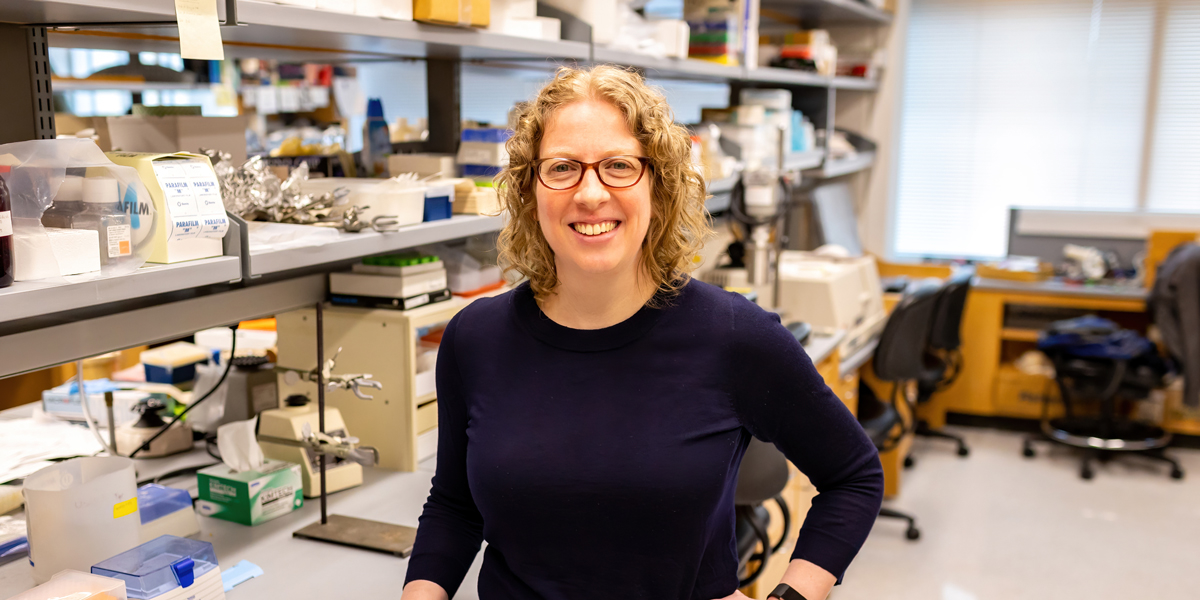
Naomi Courtemanche is a leading expert on formins, a family of proteins that help regulate the growth of the actin cytoskeleton in cells. But when she talks about formins with non-experts, she often compares them to a more familiar topic: home renovation.
“The cytoskeleton is like the framework of your house that gives it support, the actins are the building materials, and the formins are the tools you use to help shape and rebuild the structure,” she explains.
It’s a simple analogy for a not-so-simple concept, and it’s an example of how she thinks as both a researcher and a teacher. “It’s important to be able to communicate why you’re doing something and how it fits into the bigger picture.”
Hired as part of the Cellular Biophysics cluster in 2015 and promoted to associate professor last year, Courtemanche works in the lab in the spring and summer before spending her fall teaching undergraduates about cell biology.
“My class is fairly large, with about 100 students, so they all have different strengths and interests,” she says. “I love getting to know each student and trying to develop ways to explain concepts that are going to connect with them individually. I think that has made me a stronger scientist.”
Her communication skills have also come in handy for securing research funding. With her current NIH project, Courtemanche aims to understand the relationship between formins and human health. “We know that mutations in different formin genes can lead to cardiomyopathy, kidney failure, cancer and other diseases, but we don’t know why. With this project, we’re trying to figure out what a formin’s activity means to the cell, and if we alter that activity, how that leads to a disease state.”
A lot of scientists are trying to solve the mysteries of formins, but Courtemanche is one of the few to do so through a biophysical lens.
As a Ph.D. student in biophysics at Johns Hopkins, Courtemanche studied how proteins adopt their three-dimensional shapes. As a postdoc at Yale, she examined how those proteins interact with other proteins within the cytoskeleton. Now at the University of Minnesota, she looks at the relationship between actin and formin molecules using microscopy, biophysical techniques and cell experiments.
Over the past seven years, the Courtemanche lab has developed assays to study the effects of sequence changes on formin activity and the cytoskeleton. Today, they use these assays to see what happens when they alter formin function. Seven years from now? She says her goal is to have a complete understanding of the link between formin sequence, activity, and its regulation of cellular processes.
“I’m taking a physical approach to studying the properties of formins so that we can understand how they function at a molecular level. If you understand how something works, then you have a better idea of how to change or fix it.”
— Eve Daniels